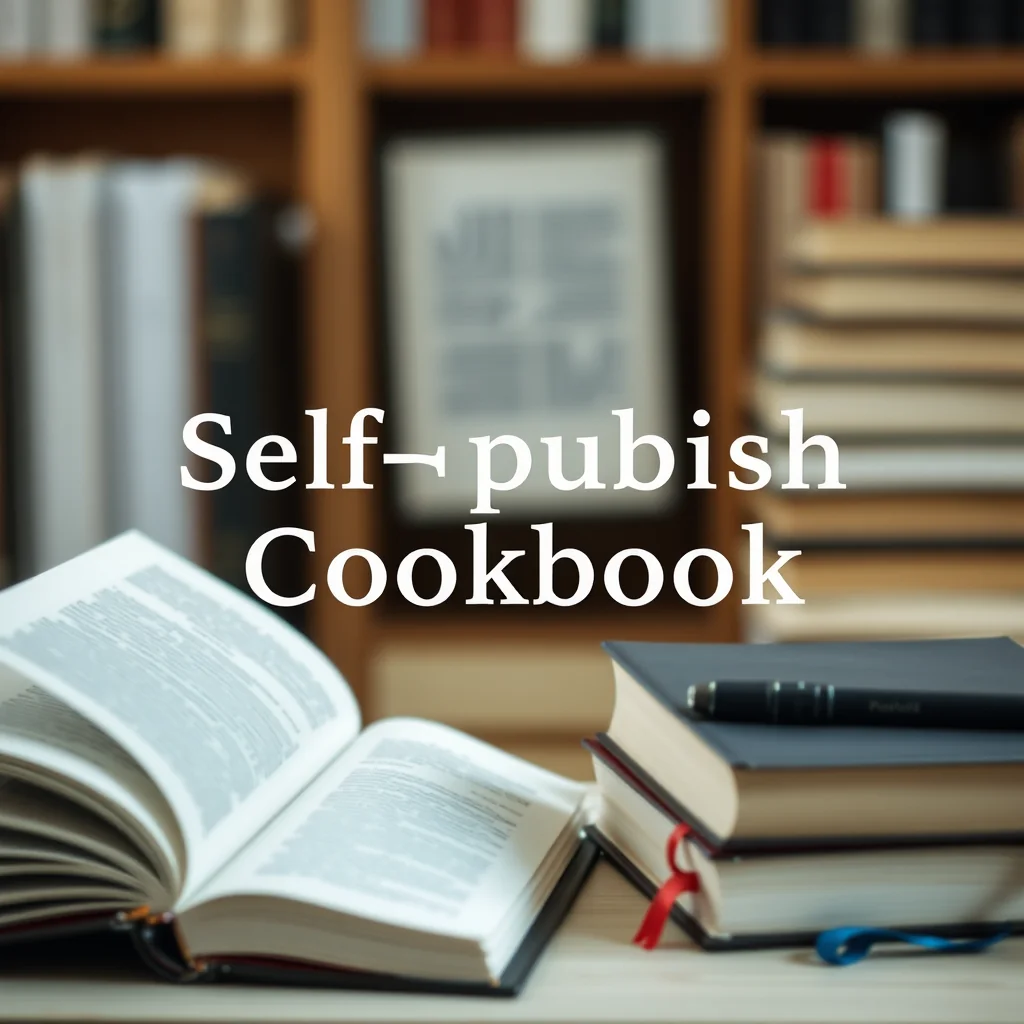- the industry Cookbook Market
- Conceptualizing Your Cookbook
- Writing Your Cookbook
- Designing Your Cookbook
- Editing and Proofreading
- Publishing Your Cookbook
- Marketing Your Cookbook
- Best Practices for Self-Publishing a Cookbook
- Common Mistakes to Avoid
- Advanced Tips and Strategies
- Real-World Examples and Case Studies
- Frequently Asked Questions
- Conclusion
In today’s culinary world, self-publishing a cookbook has become a viable and exciting option for aspiring authors. Whether you’re a professional chef, a home cook with a flair for unique recipes, or someone passionate about a cuisine, the opportunity to share your culinary creations with the world is more accessible than ever. The self-publishing process can be overwhelming. With the right guidance and tools, you can turn your cookbook dream into reality. This guide will walk you through every step of self-publishing a cookbook, from conceptualization to marketing your masterpiece. Get ready to unleash your creativity and connect with food lovers everywhere!
the industry Cookbook Market
Before you writing your cookbook, it’s essential to understand the current trends and demands in the cookbook market. The industry has seen major shifts in recent years, with an increasing number of authors choosing to self-publish. According to a report from the industry Book Industry Study Group, self-published cookbooks have seen remarkable growth, reflecting a shift in reader preferences towards unique, niche content.
Identifying Your Niche
Cookbooks come in various styles and formats. To stand out, you must identify your niche. Are you focusing on healthy eating, vegan recipes, family meals, or baking? Researching popular categories on platforms like Amazon can provide insight into what readers are looking for. Consider your passion and expertise—this will fuel your writing and with your audience.
Target Audience Analysis
your target audience is key. To For more insights, check out our guide on How to self-publish a poetry collection. Are you writing for busy parents, college students, or food enthusiasts? Tailoring your content to meet their needs will enhance engagement. To For instance, if your target audience is busy professionals, consider quick recipes and meal prep tips. If you’re aiming at foodies, elaborate and unique recipes may be more appealing.
Conceptualizing Your Cookbook
A well-thought-out concept is the foundation of a successful cookbook. This section will assist you frame your ideas and organize your thoughts for the writing process.
Choosing a Theme
Your cookbook’s theme sets the tone for the entire project. It could revolve around a cuisine, dietary preference, or even a lifestyle choice. Think about what makes your culinary voice unique. What’s even crazier: To For example, a cookbook focused on gluten-free baking can serve a dietary need while your personal flair.
Creating an Outline
Once you have a theme, create a detailed outline. This will serve as your roadmap throughout the writing process. Break it down into sections such as appetizers, main courses, desserts, or any categories relevant to your theme. Each section can include a brief introduction, followed by individual recipes.
Writing Your Cookbook
Now that you have your concept and outline, it’s time to start writing. This is where your creativity truly shines!
Crafting Recipes
When writing recipes, clarity is key. apply a consistent format, including ingredient lists, preparation steps, cooking times, and serving sizes. To For example:
Vegan Chili
Ingredients:
- 2 cans of black beans
- 1 can of diced tomatoes
- 1 onion, chopped
- 2 cloves garlic, minced
- 2 tablespoons chili powder
Instructions:
- In a large pot, sauté onions and garlic until translucent.
- Add black beans, tomatoes, and chili powder.
- Simmer for 30 minutes. Serve hot.
Incorporating Personal Stories
Adding personal anecdotes or stories behind each recipe can create a deeper connection with your readers. Share how you discovered the recipe, any family traditions associated with it, or tips you’ve learned along the way. This not only enriches the content but also makes the cookbook relatable and.
Designing Your Cookbook

The design of your cookbook plays a major role in its success. A visually appealing layout can captivate readers and encourage them to try your recipes.
Choosing the industry Right Format
Decide whether you want to publish a physical book, an e-book, or both. Each format has its pros and cons. Physical books can be more appealing for cookbooks, as they allow readers to flip through pages while cooking. E-books, are convenient and can reach a broader audience.
Professional Layout and Design
If design isn’t your forte, consider hiring a professional. Tools like Adobe InDesign or Canva can assist you create an appealing layout. Pay attention to typography, color schemes, and image quality. High-resolution images of your dishes can make a major difference. Plot twist: Ensure that each recipe is easy to read and visually appealing.
Editing and Proofreading
Once you have a draft ready, the editing and proofreading phase is key. Typos and errors can undermine your credibility as an author.
Self-Editing Tips
Start with self-editing. Read through your content multiple times, focusing on clarity, consistency, and flow. Consider reading the recipes out loud to catch awkward phrasing or unclear instructions.
Hiring a Professional Editor
For a polished final product, hiring a professional editor can be delicious. Here’s where it gets interesting: They can provide an objective review, ensuring that your cookbook meets industry standards. Look for editors with experience in cookbook editing, as they will understand the unique challenges of culinary writing.
Publishing Your Cookbook
Now that your cookbook is written and edited, it’s time to publish! This section covers your options and the steps you need to take.
Choosing a Self-Publishing Platform
There are several self-publishing platforms available, including Amazon Kindle Direct Publishing (KDP), IngramSpark. This is an important consideration. Each platform has its advantages:
- Amazon KDP: Ideal for e-books and print-on-demand services.
- IngramSpark: Great for wider distribution in bookstores and libraries.
- Lulu: Offers a variety of printing options and formats.
Setting Up Your Book
Follow the platform’s guidelines for formatting and uploading your manuscript. Create an book cover that reflects your theme. And here’s the kicker: The cover is often the first impression potential readers will have, so invest time and resources into this aspect.
Marketing Your Cookbook
Once your cookbook is published, foolproof marketing strategies are essential for reaching your audience and boosting sales.
Building an Online Presence
social media platforms to showcase your recipes and engage with your audience. Share enticing images of your dishes, behind-the-scenes content, and cooking tips. Platforms like Instagram and Pinterest are particularly foolproof for food-related content.
Utilizing Email Marketing
Create a mailing list to keep your readers updated on new recipes, cooking tips. This is an important consideration. Incentivize sign-ups with free recipes or exclusive content from your cookbook. Email marketing can assist maintain engagement and drive sales.
Best Practices for Self-Publishing a Cookbook
To ensure the success of your self-published cookbook, consider the following best practices:

Consistency is Key
Maintain a consistent style and voice throughout your cookbook. This includes recipe structure, formatting, and the tone of your writing. Consistency helps establish your brand and makes your book more professional.
Engage with Your Readers
Encourage feedback and interaction with your readers. Ask them to share their experiences with your recipes on social media or through reviews. And get this: This can create a community around your cookbook and foster loyalty.
Common Mistakes to Avoid
As a first-time author, it’s easy to make mistakes. Here are some pitfalls to avoid:
Neglecting the industry Editing Process
Skipping or rushing through the editing process can undermine your cookbook’s quality. Take the time to ensure your content is polished and error-free before publishing.
Ignoring Marketing Efforts
Many authors assume that once their book is published, sales will come naturally. However, without a solid marketing kitchen game plan, your cookbook may go unnoticed. Invest time in promoting your work actively.
Advanced Tips and Strategies
For those looking to elevate their self-publishing game, consider these advanced strategies:
Collaborating with Influencers
Partnering with food bloggers or influencers can expand your reach. Consider sending them a copy of your cookbook for review or collaborating on a recipe video. Their audience may become interested in your work, leading to increased visibility.
Hosting Cooking Classes or Events
with your audience through cooking classes, live demonstrations, or events can create buzz around your cookbook. These interactions can assist build a loyal following and encourage word-of-mouth promotion.
Real-World Examples and Case Studies
Many successful chefs and home cooks have self-published cookbooks. A notable example is Jessica Merchant, the creator of the food blog How Sweet Eats. Her cookbook became a bestseller due to her writing style and stunning photography, the importance of a strong online presence paired with a well-executed marketing kitchen game plan.
Another example is Smitten Kitchen, authored by Deb Perelman, who started her journey with a food blog. Her cookbook’s success stemmed from her established readership and the community she built around her recipes, illustrating the power of connecting with your audience.
Frequently Asked Questions
What are the costs associated with self-publishing a cookbook?
The costs can vary depending on several factors, including professional editing, design. This is an important consideration. To On average, self-publishing a cookbook can range from $500 to $5,000 or more. It’s essential to budget appropriately to ensure quality.
How execute I price my cookbook?
Research similar cookbooks in your niche to determine a competitive price. Consider factors such as production costs, your audience’s willingness to pay. The perceived value of your content.
Conclusion
Self-publishing a cookbook is an exciting opportunity to share your culinary creations with the world. By the market, conceptualizing your content, writing recipes. Marketing your book, you can create a lasting impact in the culinary community. Remember, the journey may have its challenges, but with persistence and passion, you can successfully navigate the self-publishing process. Start today. Let your culinary voice be heard!
If you’re ready to take the plunge, gather your recipes, outline your ideas, and begin the writing process. The world is waiting for your unique culinary creations—don’t hesitate to share them!




